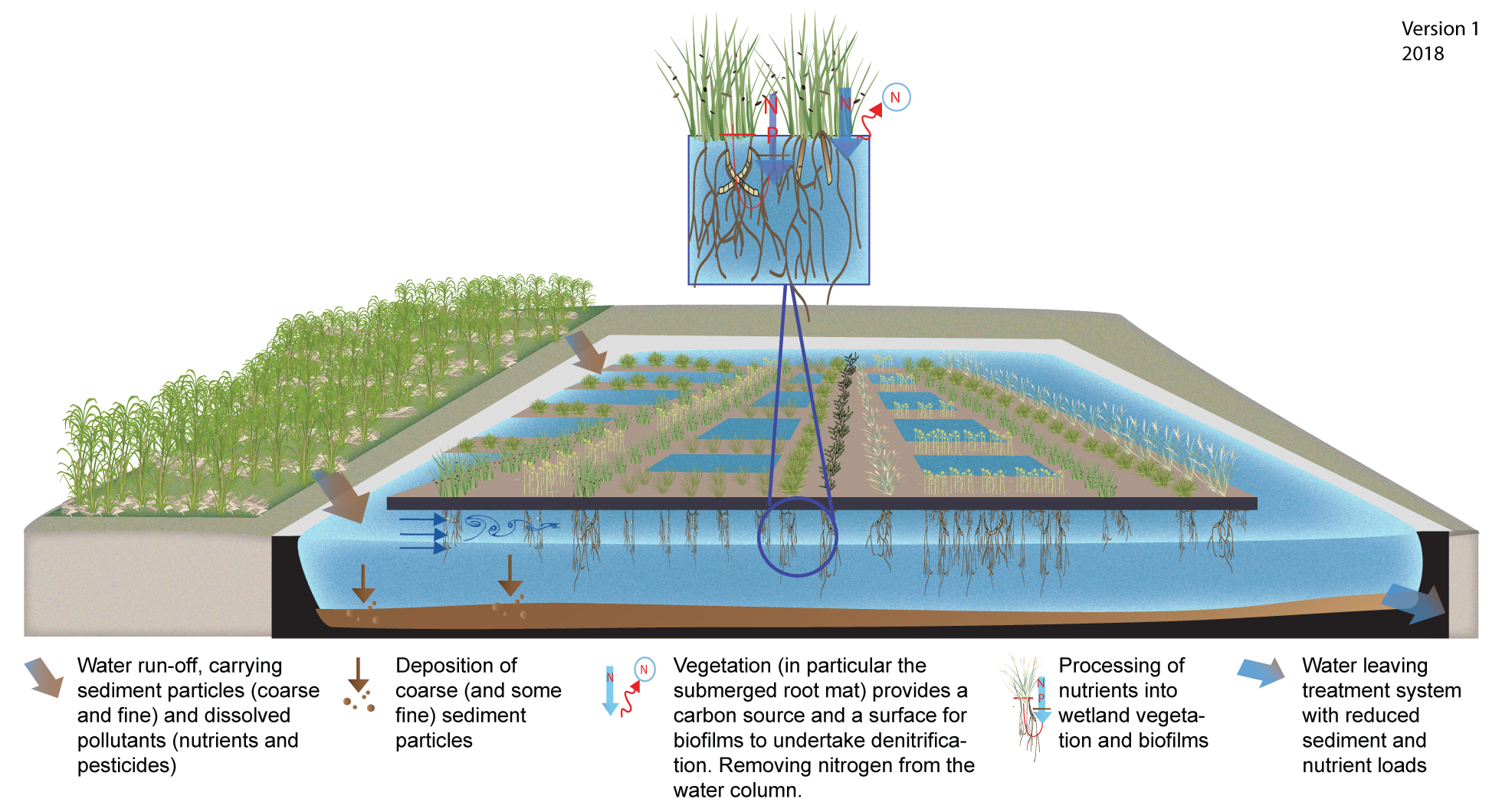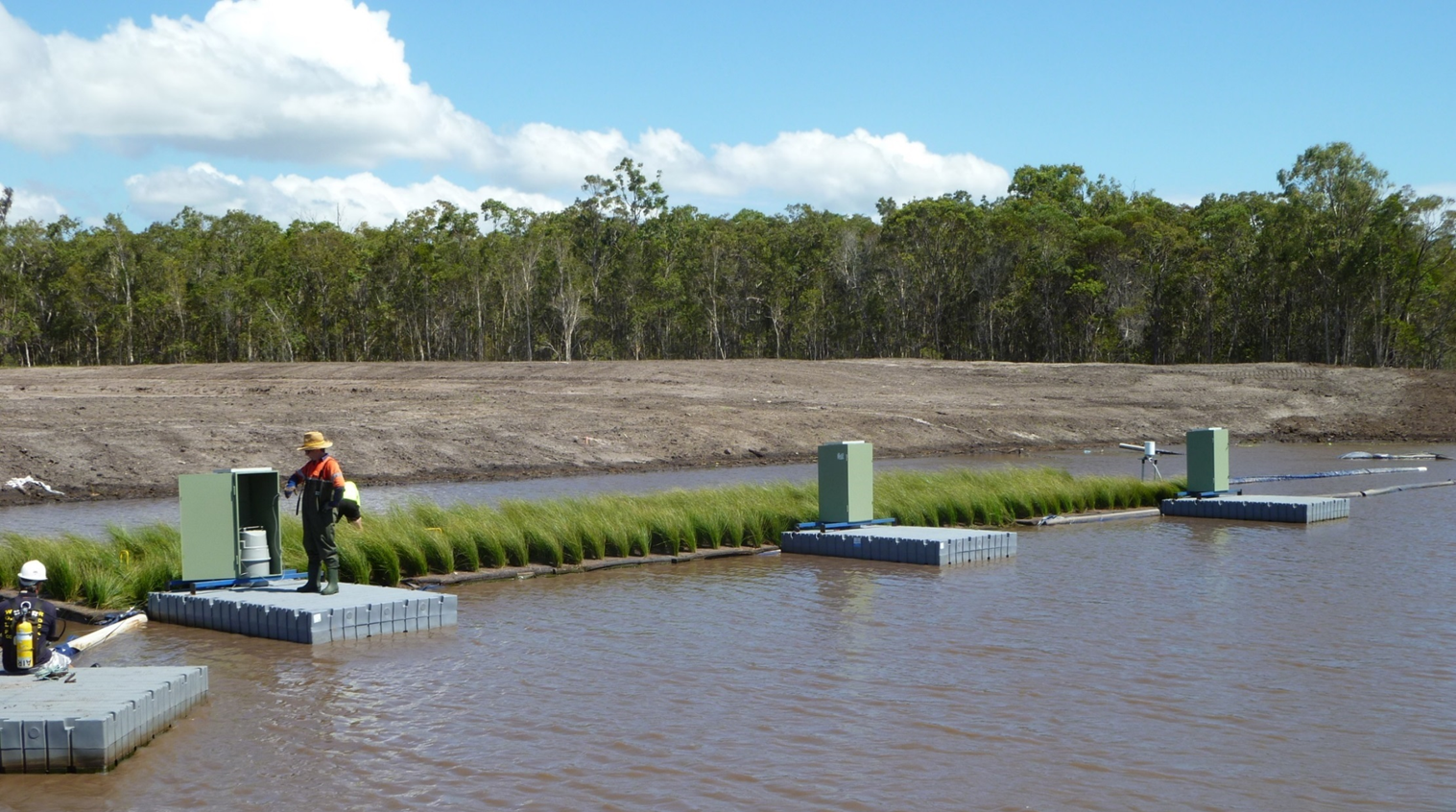|
|
Floating wetlandsFloating wetlandsSelect from the tabs below Other name/sFloating wetland, Floating treatment wetland DescriptionFloating wetlands consist of a suspended matrix planted with wetland plants. This facilitates microbiological and plant processing of nutrients. Floating wetlands work by encouraging settling and biological processing of suspended sediments, particulate and dissolved nutrients and pollutants and also by directing the water through the suspended root mass[1]. The potential mechanisms that provide treatment in floating wetlands are known but the precise contributions are uncertain[1][3][4][6][7][5]. Plant roots are believed to play a major role in treatment processes within floating wetland systems as the water passes directly through the extensive root system hanging beneath the floating mat. The roots release enzymes, develop extensive biofilms and promote flocculation of suspended matter, at the surface of the submerged plant organs[1]. Other processes that may be important include plant uptake of nutrients and metals if harvested[3][4][6][7], enhancement of anoxic conditions in the water column beneath the floating mat, which promote microbial processes such as denitrification, and promotion of settling and binding of contaminants in the sediment pool[1]. Floating wetlands can be used in existing water bodies or waterways or in a purpose built pond. As they can be used in existing water bodies, they are particularly suited to locations where there is limited space for a constructed treatment wetland or similarly large treatment system. Highly variable flows are likely to reduce the effectiveness of the treatment[2]. The actual cost-effectiveness of a floating wetland will depend on the specific site conditions and project objectives and needs to be considered relative to other treatment systems or management intervention options. Refer to cost considerations for more information. Services and benefits:
DisclaimerIn addition to the standard disclaimer located at the bottom of the page, please note the content presented is based on published knowledge of treatment systems. Many of the treatment systems described have not been trialled in different regions or land uses in Queensland. The information will be updated as new trials are conducted and monitored. If you have any additional information on treatment systems or suggestions for additional technologies please contact us using the feedback link at the bottom of this page. References
Last updated: 19 April 2022 This page should be cited as: Department of Environment, Science and Innovation, Queensland (2022) Floating wetlands, WetlandInfo website, accessed 18 March 2024. Available at: https://wetlandinfo.des.qld.gov.au/wetlands/management/treatment-systems/for-agriculture/treatment-sys-nav-page/floating-wetlands/ |

 — Department of Environment, Science and Innovation
— Department of Environment, Science and Innovation




